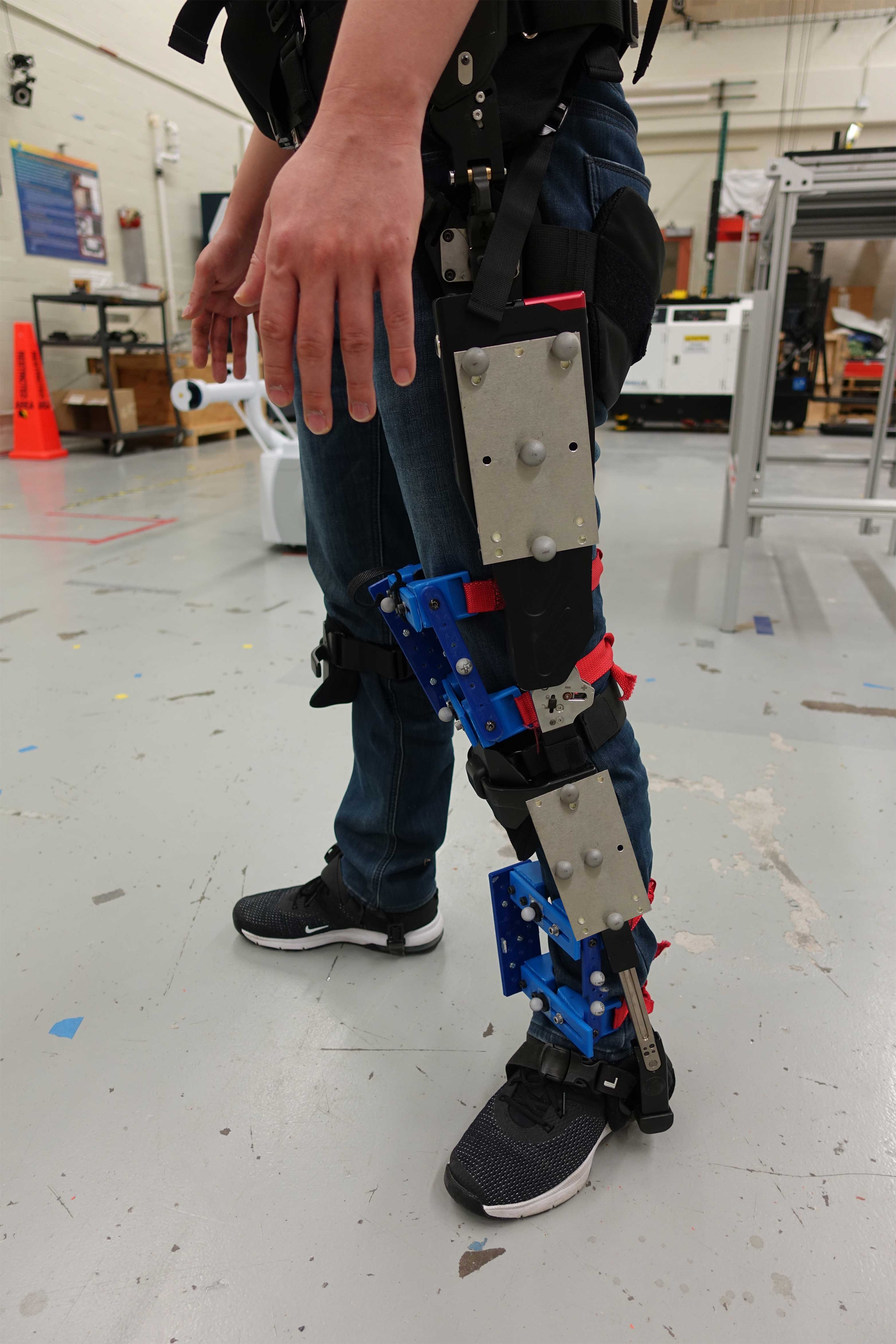Reflective markers are attached to blue 3D-printed apparatus above and below the user’s knee as well as two metal plates on the exoskeleton leg. Researchers track and compare the movement of the markers to gain insight into how well the exoskeletons fit. In this composite photo, the bottom plate has been added after the original image was taken to show the entire configuration.
Credit: N. Hanacek/NIST
Topics: Applied Physics, NIST, Research, Robotics
A shoddily tailored suit or a shrunken T-shirt may not be the most stylish, but wearing them is unlikely to hurt more than your reputation. An ill-fitting robotic exoskeleton on the battlefield or factory floor, however, could be a much bigger problem than a fashion faux pas.
Exoskeletons, many of which are powered by springs or motors, can cause pain or injury if their joints are not aligned with the user. To help manufacturers and consumers mitigate these risks, researchers at the National Institute of Standards and Technology (NIST) developed a new measurement method to test whether an exoskeleton and the person wearing it are moving smoothly and in harmony.
In a new report, the researchers describe an optical tracking system (OTS) not unlike the motion capture techniques used by filmmakers to bring computer-generated characters to life.
The OTS uses special cameras that emit light and capture what is reflected back by spherical markers arranged on objects of interest. A computer calculates the position of the labeled objects in 3D space. Here, this approach was used to track the movement of an exoskeleton and test pieces, called “artifacts,” fastened to its user.
Exoskeleton Research Marches Forward With NIST Study on Fit, NIST

Comments